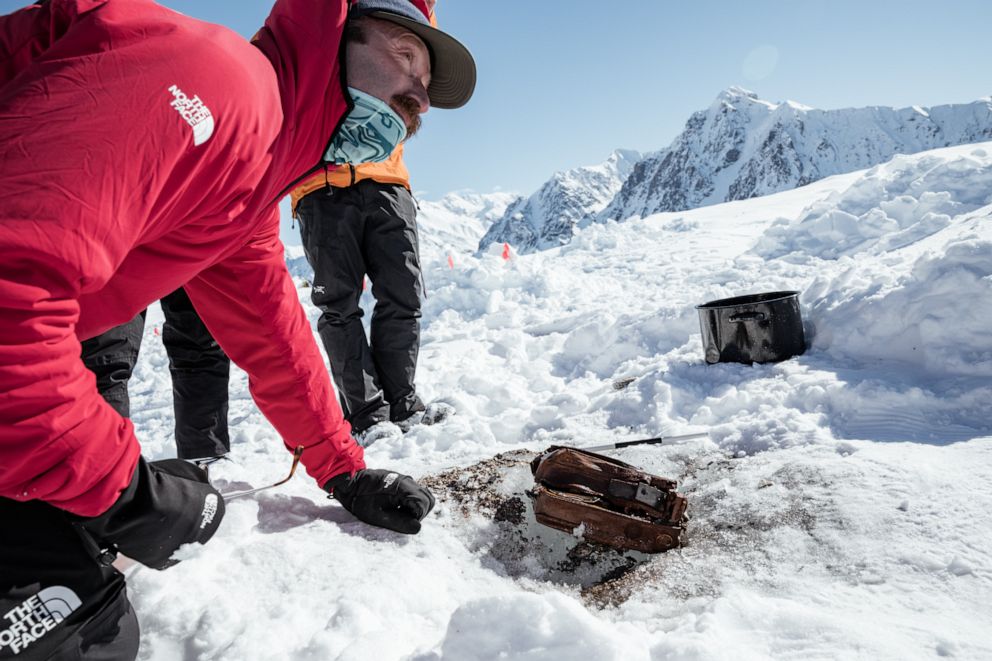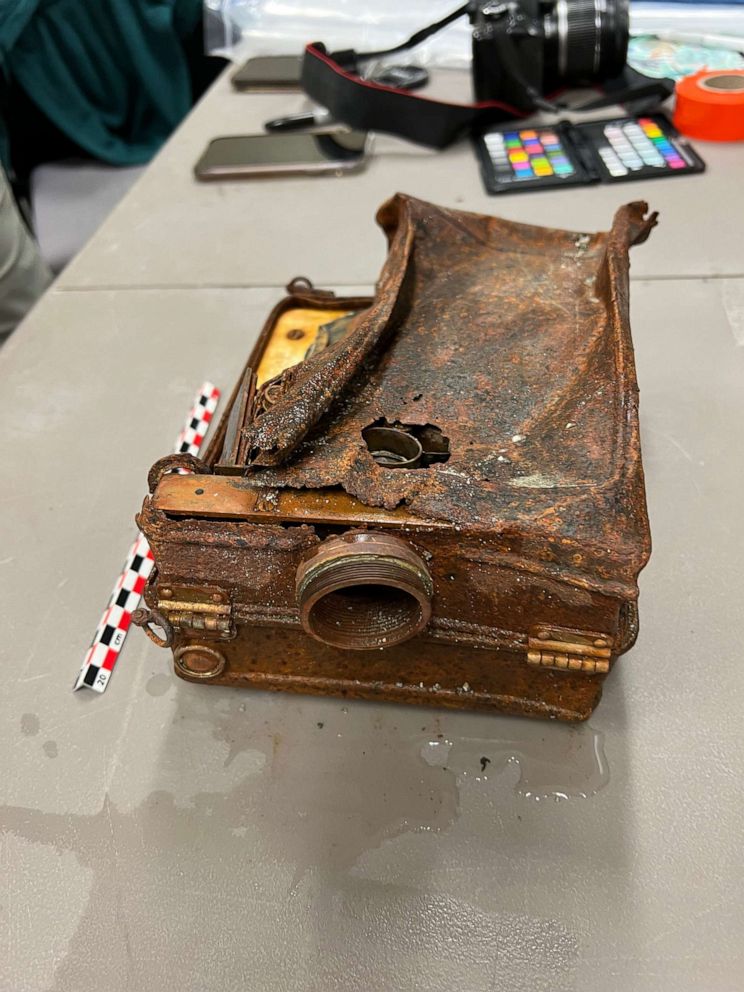85 years later, camera abandoned by explorers is found on a glacier in Canada
In 1937, two mountaineers abandoned their camera equipment to return to safety – 85 years later, it's been found

In 1937, American photographer and mountaineer Brad Washburn was on an expedition with friend and fellow mountaineer Robert Bates when the pair had to abandon their camera equipment and hike to safety. Washburn and Bates were exploring the Yukon region in Canada when weather conditions made it impossible for the pilot to return for them, so they stashed a heavy camera cache and made the 100-mile trek on foot.
Earlier this year, indie film distribution company Dogwoof released The Sanctity of Space; a documentary film inspired by one of Washburn's more well-known expeditions in Denali National Park. But for Griffin Post, who led this latest expedition alongside Teton Gravity Research and the University of Ottawa’s glaciologist Dora Medrzycka, it was the 1937 expedition that engaged him the most.
• These are the best cameras for landscape photography
Post first found out about the abandoned cache in Escape from Lucania, a book by David Roberts. In the epic story of survival, Roberts (a keen mountaineer himself) describes the challenges faced and obstacles overcome by Washburn and Bates as they became the first men to climb Mount Lucania.
Originally it was meant to be a four-man expedition but, due to changing weather conditions, the plane was unable to return with the rest of the team and vital supplies. The only way to make it back to safety was to ditch the heavy kit and hike.
The expedition to uncover the lost equipment took place over seven days, but it wasn't until the final day that the team had any luck. "When we did find it man, that was priceless," Medrzycka told ABC news . "I'll never forget that moment."

A portion of Washburn’s first aerial camera, a Fairchild F-8 was found among the abandoned equipment, alongside two motion picture cameras, a Devy "lunchbox" model and a Bell & Howell Eyemo 71A– both still loaded with film. Over the next few weeks, the team will be examining the equipment and Post remains "cautiously optimistic that something will be salvageable."
Get the Digital Camera World Newsletter
The best camera deals, reviews, product advice, and unmissable photography news, direct to your inbox!
Although locating the camera cache is a massive win for Post and the team, the glacial data revealed by the movement of the cache can help them to better understand how the glacier has changed over time. Before finding the equipment glacial records only dated back as far as the Sixties, so this gives almost 40 years more data.
Using photos taken by Washburn in 1937, Post compared the landscapes of then and now and was shocked by how different they were. In just 85 years, "100 or 200 vertical feet of ice has essentially disappeared," so the new terrain was hardly recognizable.
While the mission was a roaring success in terms of locating the cameras, it has also revealed the devastating effects of climate change on the area. Glaciers like such as the Walsh Glacier are melting and moving at an unprecedented rate, and while the discovery of the cameras means mission success, it's the discovery of glacial movements that is perhaps more important.
Make sure to read the full news story with more photographs at Teton Gravity Research.
These are the best camera drones so you can capture stunning photos from above

Having studied Journalism and Public Relations at the University of the West of England Hannah developed a love for photography through a module on photojournalism. She specializes in Portrait, Fashion and lifestyle photography but has more recently branched out in the world of stylized product photography. Hannah spent three years working at Wex Photo Video as a Senior Sales Assistant, using her experience and knowledge of cameras to help people buy the equipment that is right for them. With eight years experience working with studio lighting, Hannah has run many successful workshops teaching people how to use different lighting setups.
